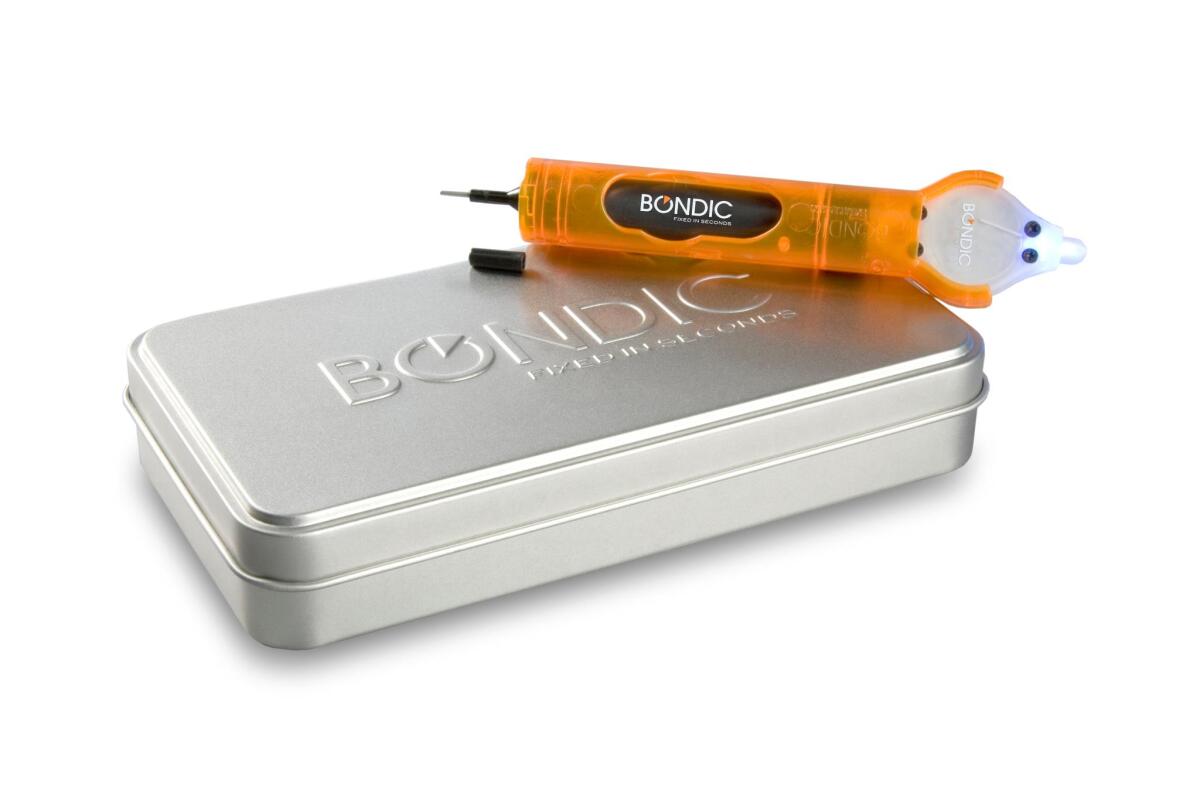Perhaps you've had one or more of the following experiences when trying to stick items together using super glue: the glue sets before the objects can be properly aligned, it won't set fast enough, or it hardens inside the bottle once it's been opened. Well, Bondic is claimed to have none of those problems. It's described as a "liquid plastic welder" that sets within four seconds, but only once it's been exposed to an included UV light.
First of all, adhesives that are cured using ultraviolet light have indeed been around for some time. They typically require users to supply their own UV light, however, and thus are usually limited to industrial or even medical applications.
By contrast, Bondic comes with its own UV LED that sits on the end of a reusable cartridge filled with the liquid plastic.
The liquid is applied via a needle-type applicator, to items made out of materials including plastic, metal, fiberglass or wood. It can then be worked with until users have got everything set up the way they wish. They then just shine the light on the liquid for four seconds, which is reportedly all that's required to cause it to harden.

Along with simply joining things together, this technique also allows successive layers of the plastic to be laid down one on top of another, in order to fill gaps. Once a gap is filled, the hardened plastic can be sanded, polished or painted as needed.
A kit containing one applicator, light, and 4-gram tube of the liquid plastic can be purchased for US$22.
Bondic can be seen in use, in the video below.





